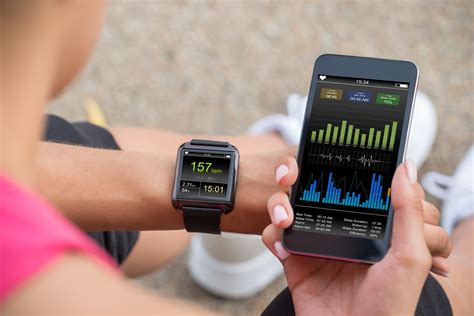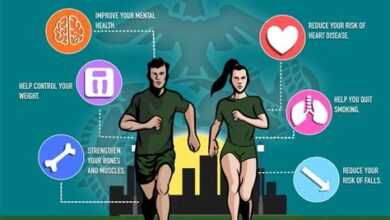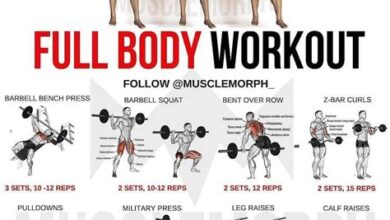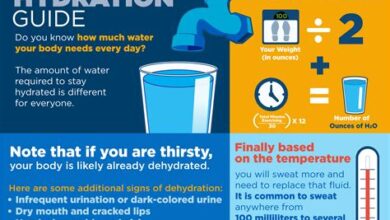How to Use Technology to Track and Improve Physical Health

Discover the latest trends in wearable fitness trackers, health monitoring apps, telemedicine, virtual fitness classes, and nutrition tracking apps for a healthier lifestyle.In today’s fast-paced world, keeping track of our physical health can be a challenging task. Fortunately, advancements in technology have made it easier than ever to monitor and improve our fitness levels. From wearable fitness trackers to telemedicine consultations, there are a plethora of tools and resources available to help us stay on top of our health goals. In this blog post, we will explore the various ways in which technology can be used to track and improve physical health. We will delve into the benefits of wearable fitness trackers, the convenience of health monitoring apps, the accessibility of telemedicine for remote consultations, the effectiveness of virtual fitness classes, and the simplicity of nutrition tracking apps. Whether you’re a fitness enthusiast or someone looking to make positive changes to your health, this post will provide valuable insights on how to harness the power of technology for a healthier, happier you.
Wearable Fitness Trackers
Wearable fitness trackers have become increasingly popular in recent years as individuals seek to monitor and improve their physical health. These devices, such as smartwatches and fitness bands, offer the convenience of tracking vital health data in real-time, providing valuable insights into activity levels, heart rate, sleep patterns, and more. By wearing a fitness tracker throughout the day, individuals can gain a better understanding of their overall health and fitness habits, empowering them to make positive changes.
One of the key benefits of using wearable fitness trackers is the ability to set and track fitness goals. Whether it’s aiming for a certain number of steps per day or improving cardiovascular fitness, these devices allow users to set personalized targets and monitor their progress over time. This not only motivates individuals to stay active and make healthier choices, but also provides a clear visualization of their achievements, encouraging them to continue on their fitness journey.
Furthermore, wearable fitness trackers often offer additional features such as GPS tracking, workout summaries, and even social connectivity, enabling users to share their progress with friends and participate in friendly fitness challenges. This social aspect can help individuals stay accountable, stay motivated, and even find a sense of community in their pursuit of better health. Overall, the integration of technology through wearable fitness trackers has revolutionized the way people approach their physical well-being, making it easier and more engaging to prioritize health and fitness in their daily lives.
Health Monitoring Apps
Health monitoring apps have become increasingly popular in recent years as people look for convenient ways to track and improve their physical well-being. These apps are designed to help users keep tabs on various aspects of their health, from tracking daily steps and monitoring heart rate to keeping a log of their food intake and water consumption. With the advancement in technology, these apps have become more sophisticated and accurate, providing users with valuable insights into their overall health.
One of the key benefits of health monitoring apps is the ability to easily access and analyze personal health data. Users can see trends in their activity levels, sleep patterns, and dietary habits, which can help them identify areas for improvement and set realistic health goals. Additionally, many health monitoring apps offer features such as personalized health tips, goal tracking, and reminders to stay hydrated or take medication, making it easier for users to stay on top of their health and wellness routines.
Furthermore, health monitoring apps also play a role in promoting preventive healthcare by allowing users to proactively manage their health. By regularly monitoring vital signs and physical activity, individuals can quickly notice any unusual changes or symptoms and seek medical advice promptly. This proactive approach to health management can potentially lead to early detection of health issues and more effective treatment, ultimately contributing to better overall well-being.
Telemedicine for Remote Consultations
In today’s digital age, the healthcare industry has embraced technology to provide more convenient and accessible care to patients. One of the most groundbreaking advancements in this field is the emergence of telemedicine for remote consultations. With the help of video conferencing tools and other digital platforms, patients can now connect with their healthcare providers from the comfort of their own homes. This has revolutionized the way medical consultations are conducted, especially for individuals who live in remote areas or have limited access to healthcare facilities.
Telemedicine has not only made it easier for patients to seek medical advice, but it has also opened up new opportunities for healthcare professionals to expand their reach and provide services to a wider population. This has been particularly beneficial during the ongoing global health crisis, where in-person visits to healthcare facilities have been limited. By utilizing telemedicine, patients can receive timely medical attention without having to physically visit a hospital or clinic, reducing the risk of exposure to infectious diseases.
Furthermore, telemedicine has proven to be effective in managing chronic conditions and monitoring patients’ health proactively. Through remote consultations, healthcare providers can track their patients’ progress, adjust treatment plans, and offer ongoing support and guidance. This not only improves the overall health outcomes for patients, but also fosters a stronger patient-provider relationship that is built on trust and personalized care.
Virtual Fitness Classes
Virtual fitness classes have become increasingly popular in recent years, and especially so in the wake of the COVID-19 pandemic. With gyms and fitness studios closed, many people turned to virtual classes as a way to stay active and engaged in their fitness routines. The convenience of being able to participate in a class from the comfort of one’s own home is a major draw for many individuals.
Furthermore, virtual fitness classes offer a wide range of options, from high-intensity interval training (HIIT) to yoga and pilates. This variety allows individuals to explore different types of workouts and find what works best for them, all without having to leave their homes. Many virtual fitness platforms also offer live classes, providing a sense of community and accountability that can help individuals stay motivated and committed to their fitness goals.
Additionally, virtual fitness classes often provide the added benefit of flexibility in scheduling. With pre-recorded classes available on many platforms, individuals can fit their workouts into their busy schedules at their convenience, eliminating the need to adhere to a specific class time. This flexibility can be particularly beneficial for those with demanding work or family commitments.
Nutrition Tracking Apps
How to Use Technology to Track and Improve Physical Health
In today’s fast-paced world, it can be challenging to keep track of our nutritional intake. With the rise of technology, however, tracking our nutrition has become easier and more convenient than ever. Nutrition tracking apps have revolutionized the way we monitor our food consumption, making it simpler to stay on top of our health goals.
These apps allow users to input their daily meals and snacks, providing them with a detailed breakdown of their calorie, macronutrient, and micronutrient intake. Health-conscious individuals can use these apps to set specific nutritional targets and receive notifications when they are approaching their limits.
Furthermore, nutrition tracking apps often come with features that enable users to scan barcodes or search for food items, making it effortless to log their meals. Some apps even offer personalized recommendations and meal plans based on individual dietary needs, making it easier for people to make healthier choices when it comes to eating. With the help of these innovative tools, anyone can take control of their nutrition and work towards improved physical health.





